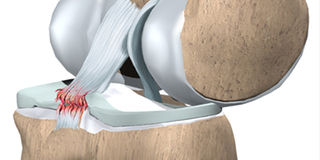Why posterior cruciate ligament injuries rarely require surgery

What you need to know:
- As always it cannot be stressed enough the importance of a good pre-season and warm up before individual games.
- Although rare, the unstable PCL injury should not be missed as it may lead to osteoarthritis of the knee.
This week we focus on the posterior cruciate ligament (PCL).
It is one of the the major knee ligaments.
It is in fact the strongest knee ligament and, unsurprisingly, less prone to injury than the others.
It plays an important role in preventing the upper body from sliding over the lower leg at the knee. Injuries to the PCL occur when a backward directed force is applied to the knee just below the knee cap.
This can be seen, for example, when one falls and lands directly on to the bent knee or is on the receiving end of a low rugby tackle.
The other common way in which the PCL is injured is when it undergoes a hyperextension (when the knee-joint is forced backwards).
This may happen for example when one jumps up and lands on the straight leg as may be seen in basketball or netball.
Commonly there is a sharp pain at the time of injury and the sports participant may feel something pop. There may also be swelling and bruising acutely.
Injuries to the PCL are graded as either a small tear with no instability, partial tear with very mild instability, or a complete tear.
The fourth grade relates to when other ligaments are also injured leading to gross instability.
For the grade 1 and 2 injuries, the return to sport is often very rapid and is possible within 2 weeks. Many athletes often don’t realise that they have injured the PCL especially if they have got good muscle strength and balance.
The grade 3 and 4 injuries lead to instability of the knee and when this is noted, urgent medical attention is required.
The initial assessment uses x-ray to rule out fractures but the most useful test is the MRI scan which would define the PCL injury and whether other ligaments are involved.
When a PCL injury is diagnosed, the initial treatment is rest, ice, compression and elevation.
Strengthening exercises
This may be accompanied by a short period on crutches to reduce weight bearing. In the more severe cases, a brace may be prescribed to prevent side to side movement of the knee.
Following this initial period of rest, strengthening exercises should be used under the supervision of physiotherapists.
The most important muscles in preventing PCL injuries are the hamstrings located at the back of the thigh and the quadriceps at the front.
These muscles are equally important in the rehabilitation after injury.
Surgery is rarely required to manage PCL ruptures, however, in the grade 3 and 4 injuries it may be required particularly if there is persisting instability.
Surgery involves reconstruction of the ligament using either tendons or synthetic tissue.
The return to sports after the reconstruction is normally around 12 months and involves fairly intense physiotherapy.
For the grade 1 and 2 injuries most people can return to play having undergone good physiotherapy.
As always it cannot be stressed enough the importance of a good pre-season and warm up before individual games.
Although rare, the unstable PCL injury should not be missed as it may lead to osteoarthritis of the knee.
Mordicai is an orthopaedic surgeon specialising in sports injuries. [email protected]
x




